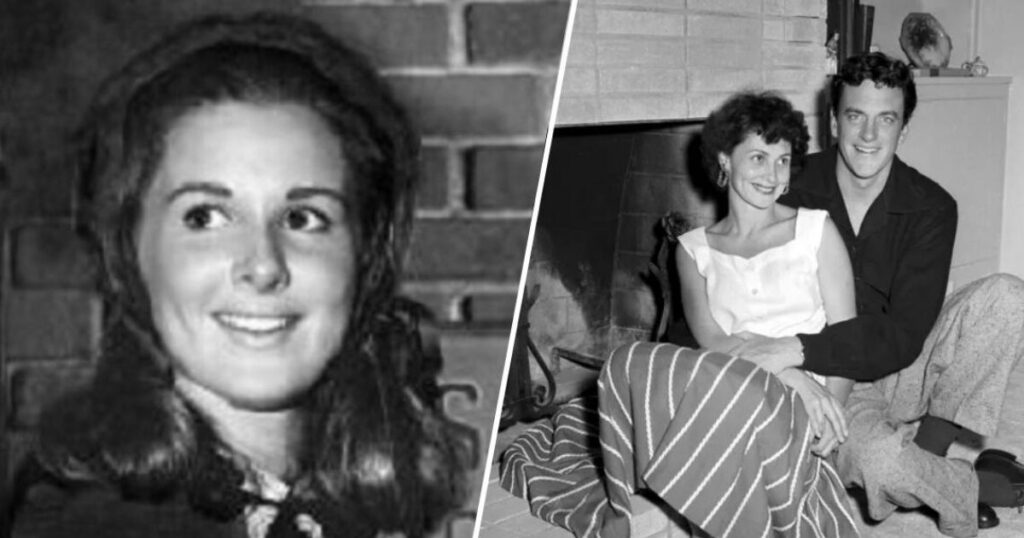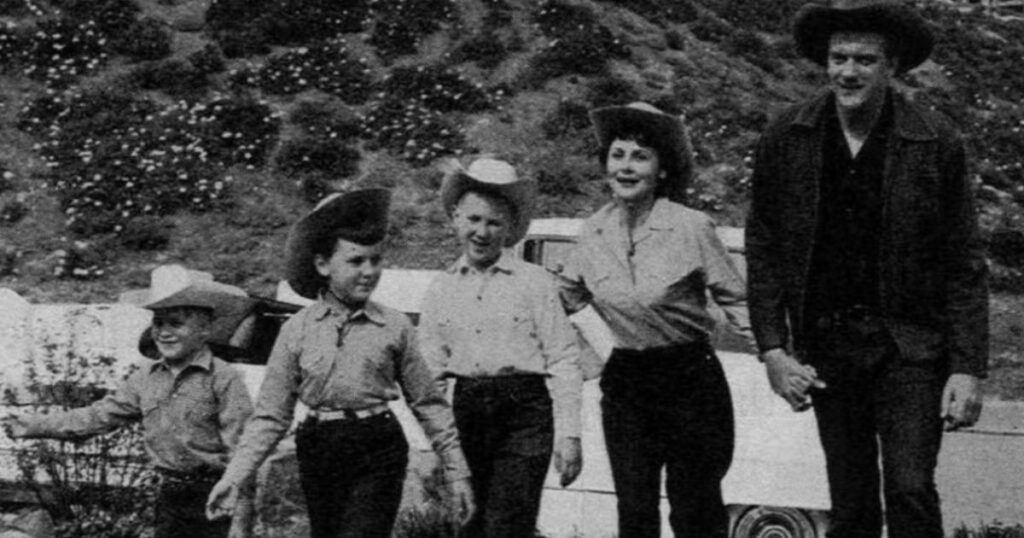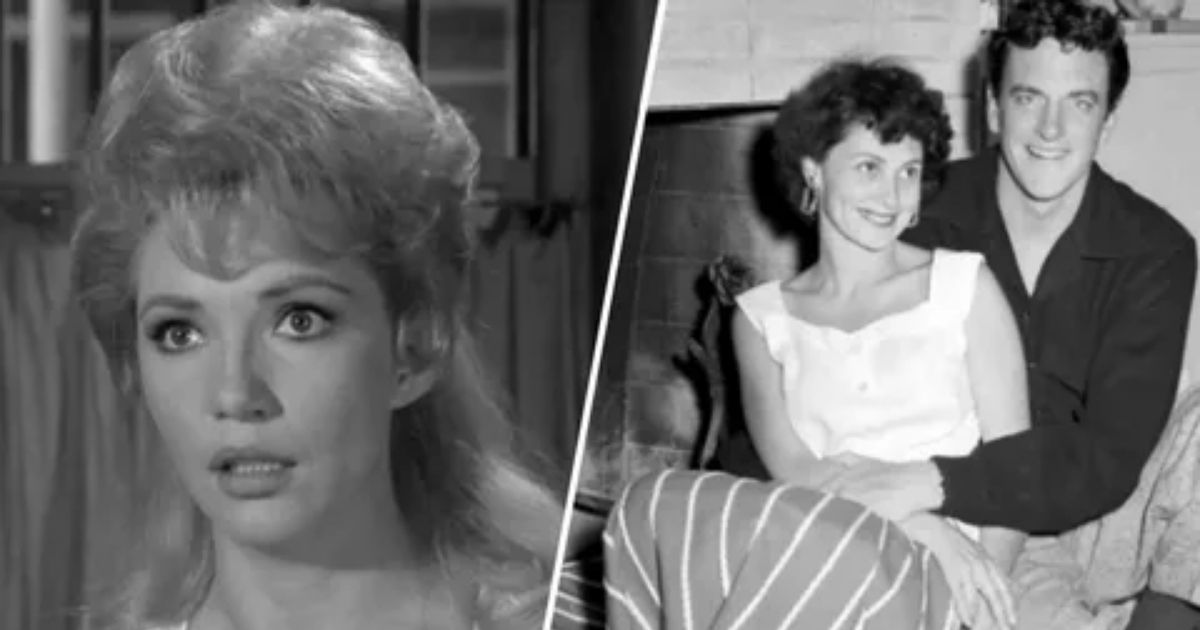Jenny Lee Arness emerged as a profound symbol of the hidden vulnerabilities beneath Hollywood’s glittering surface.
Born on May 23, 1950, in California, USA, her life would become a haunting narrative of potential interrupted by deeply rooted personal struggles.
As the daughter of legendary Marshal Matt Dillon actor James Arness, her story transcends mere celebrity tragedy, revealing the intricate human experiences often obscured by fame’s intense spotlight.
Roots of a Complicated Childhood

The Arness family dynamics presented a complex tapestry of professional success and personal turmoil. California in the 1950s and 1960s represented more than a geographical location for Jenny—it was a crucible of entertainment industry pressures, familial expectations, and psychological challenges that would profoundly shape her journey.
Her early education traversed traditional boundaries. After completing foundational schooling in California, Jenny pursued an unconventional path by studying at a university in Switzerland.
This international experience offered a momentary reprieve from the intense familial and professional expectations that surrounded her life.
Generational Dynamics of Fame

James Arness: Beyond the Television Icon
James Arness represented far more than his iconic portrayal of Marshal Matt Dillon on Gunsmoke. He was a cultural touchstone whose screen presence defined an entire era of television storytelling.
Standing at an impressive 6’7″, Arness embodied a rugged masculinity that resonated with millions of Americans.
Yet, behind his commanding screen persona, James navigated complex personal landscapes. His marriage to Virginia Chapman was marked by significant challenges, ultimately dissolving in 1963—a pivotal moment that would deeply impact Jenny’s childhood emotional landscape.
Virginia Chapman: A Mother’s Unresolved Struggles
Virginia Chapman, an actress in her own professional right, battled significant personal demons. Her relationship with James Arness reflected the tumultuous nature of Hollywood relationships—passionate yet ultimately unsustainable.
Her own struggles with addiction would tragically foreshadow her daughter’s future challenges.
A Fleeting Glimpse of Performance Potential
Jenny’s brief acting journey included two notable appearances on Gunsmoke: the episodes “Aunt Thede” and “The Glory and the Mud” in 1964.
These performances represented more than mere screen time—they were delicate hints of potential, whispers of an artistic legacy that would remain largely unexplored.
Romantic Entanglements and Emotional Turbulence
Her relationship with musician Gregg Allman emerged as a defining chapter in her personal narrative. Known for his own tumultuous life with the Allman Brothers Band, Gregg represented both an escape and a potential catalyst for Jenny’s escalating emotional challenges.
Their connection was intense and complicated—a microcosm of the broader emotional landscape Jenny navigated. The eventual breakup reportedly triggered profound psychological distress, further destabilizing her already fragile mental state.
The Silent Battle: Mental Health Challenges
Schizophrenia emerged as the most significant adversary in Jenny’s life journey. This complex mental health condition created insurmountable barriers, disrupting her ability to establish stable personal and professional connections.
The unforgiving Hollywood environment of the 1970s offered minimal understanding or compassionate support for individuals battling severe psychological conditions.
| Significant Life Milestones | Details |
| Full Name | Jenny Lee Arness |
| Birth Date | May 23, 1950 |
| Birthplace | California, USA |
| Siblings | Craig Arness, Rolf Arness |
| Notable Relationship | Gregg Allman |
| Death Date | May 12, 1975 |
| Place of Death | Malibu, California |
The Tragic Conclusion: A Life Interrupted
On May 12, 1975, in Malibu, California, Jenny Lee Arness encountered her final, devastating moment. At just 24 years old, she died from a heroin overdose, which authorities ultimately ruled a suicide.
This heartbreaking conclusion represented the culmination of long-standing battles with mental health, substance abuse, and the overwhelming pressures of her unique familial legacy.
Family Grief and Generational Trauma
The Arness family’s pain transcended typical mourning. James Arness, a figure of stoic masculinity on screen, was reportedly devastated by his daughter’s death.
The tragedy was exponentially compounded when Virginia Chapman died just two years later from an overdose of sleeping pills—a haunting, almost unimaginable parallel that underscored the deep-rooted psychological challenges within their family system.
Lasting Legacy: Beyond Personal Tragedy
Jenny Lee Arness’s story represents far more than a tragic headline. Her brief life serves as a powerful testament to the critical importance of mental health awareness, particularly within high-pressure environments like entertainment.
She embodies the nuanced struggles of individuals battling psychological challenges, substance abuse, and the overwhelming expectations of generational fame.
A Profound Human Narrative
While her life was tragically short, Jenny Lee Arness symbolizes a broader, more complex narrative about human vulnerability.
Her journey reveals the intricate psychological landscapes that exist behind public personas—a story far more profound than simple celebrity mythology.
Her legacy continues to resonate, reminding us that every individual, regardless of their familial background or potential, carries a deeply personal, often painful narrative of survival, struggle, and ultimately, profound human complexity.
Her story challenges us to look beyond surface-level perceptions, to understand the multifaceted nature of human experience, and to approach mental health with compassion, understanding, and unwavering support.
Siblings and Family Dynamics
Craig Arness and Rolf Arness, Jenny’s brothers, experienced their own unique challenges growing up in the Arness household.
While less documented, their family’s journey was marked by the intense scrutiny of public life and the personal struggles that threatened to consume their familial bonds.
The Arness siblings represented a microcosm of Hollywood’s complex family narratives. Each carried the weight of their father’s iconic status, navigating personal identities while existing in the long shadow of James Arness’s television legacy.
Their family story was not just about fame, but about survival, resilience, and the profound emotional challenges that accompany celebrity.
The Broader Context of Hollywood’s Mental Health Landscape
The 1970s represented a critical period in understanding mental health within the entertainment industry. Jenny Lee Arness’s struggles with schizophrenia occurred during an era of limited psychological support and significant stigma surrounding mental health challenges.
Hollywood of that era often prioritized public image over personal well-being. Actors and their families frequently suffered in silence, with mental health concerns swept under the proverbial rug.
Jenny’s experience highlighted the urgent need for comprehensive mental health support, especially for individuals navigating the high-pressure environment of entertainment.
Societal and Cultural Implications
Jenny’s story intersects with broader societal conversations about mental health, addiction, and the psychological toll of fame.
Her experiences reflect the complex intersections of substance abuse, emotional distress, and the often-unrealistic expectations placed upon children of prominent public figures.
The narrative surrounding Jenny Lee Arness challenges simplistic understandings of celebrity tragedy. It demands a more nuanced exploration of individual suffering, familial dynamics, and the profound psychological challenges that can exist behind seemingly glamorous exteriors.
Medical and Psychological Perspectives
Schizophrenia during the 1970s was poorly understood, with limited treatment options. Jenny’s diagnosis would have presented significant challenges, particularly within the context of a high-profile family constantly under public scrutiny.
The medical approaches of that time often relied on limited pharmaceutical interventions and minimal therapeutic support.
Modern psychological research suggests that individuals with schizophrenia require comprehensive, compassionate care—something tragically absent during Jenny’s lifetime.
Her story serves as a powerful reminder of the importance of holistic mental health support, destigmatization, and understanding.
The Ripple Effect of Personal Tragedy
The Arness family’s collective grief extended far beyond Jenny’s immediate loss. James Arness, despite his stoic public persona, was deeply affected by the successive losses of his daughter and then his ex-wife. These personal tragedies challenged the carefully constructed public image of Hollywood success.
Their story represents more than individual suffering—it symbolizes the broader human experience of navigating loss, mental health challenges, and familial complexity. T
he Arness narrative transcends celebrity, offering a deeply human exploration of vulnerability, struggle, and the profound interconnectedness of family experiences.
Cultural and Historical Context

The mid-1970s represented a transformative period in American culture. As Gunsmoke concluded its legendary run and television landscapes shifted, Jenny’s life unfolded against a backdrop of significant social and cultural change.
The entertainment industry was experiencing profound transformations, challenging traditional narratives and exploring more complex human experiences.
Her story intersects with broader cultural conversations about mental health, addiction, and the psychological challenges faced by individuals in the public eye. Jenny Lee Arness became an unintentional symbol of the hidden struggles beneath Hollywood’s glossy surface.
Continuing Relevance and Impact
Decades after her death, Jenny Lee Arness continues to provoke important conversations about mental health, familial support, and the often-unseen challenges faced by individuals navigating complex psychological landscapes.
Her legacy extends beyond her tragically short life—she represents a powerful reminder of the importance of compassion, understanding, and comprehensive mental health support.
Her story challenges us to look beyond surface-level perceptions and recognize the profound complexity of human experience.
FAQ’s
What happened to James Arness’s daughter Jenny?
Jenny Lee Arness died by heroin overdose in Malibu on May 12, 1975, at age 24, after battling schizophrenia and substance abuse.
How many kids did James Arness have in real life?
James Arness had three children: Jenny Lee Arness and two sons, Craig and Rolf Arness.
How old was Jenny Arness when she died?
Jenny Arness was 24 years old when she tragically died on May 12, 1975.
Did James Arness’ daughter ever appear on Gunsmoke?
Yes, Jenny Lee Arness appeared in two Gunsmoke episodes: “Aunt Thede” and “The Glory and the Mud” in 1964.
How old was James Arness in the last episode of Gunsmoke?
James Arness was 50 years old when Gunsmoke aired its final episode in 1975.
What was the relationship between James Arness and Peter Graves?
James Arness and Peter Graves were brothers-in-law, both successful actors who were married to sisters. They were also close friends and occasionally worked together in the entertainment industry.
Conclusion
Jenny Lee Arness, daughter of Gunsmoke star James Arness, lived a tragically short life marked by mental health struggles and addiction. Born in 1950 in California, she briefly appeared in two Gunsmoke episodes before battling schizophrenia.
Her relationship with musician Gregg Allman and personal challenges highlighted the hidden pressures of Hollywood life. At just 24, Jenny died from a heroin overdose in Malibu, California in 1975, devastating her family.
Her story serves as a powerful reminder of mental health challenges and the complex emotional landscape behind celebrity families, emphasizing the critical need for compassion and understanding.
Click Here For More Blog’s:

Passionate about bringing celebrities’ stories to life, Infozoomers.com offers in-depth biographies, intriguing insights, and a closer look into the lives of notable figures.
